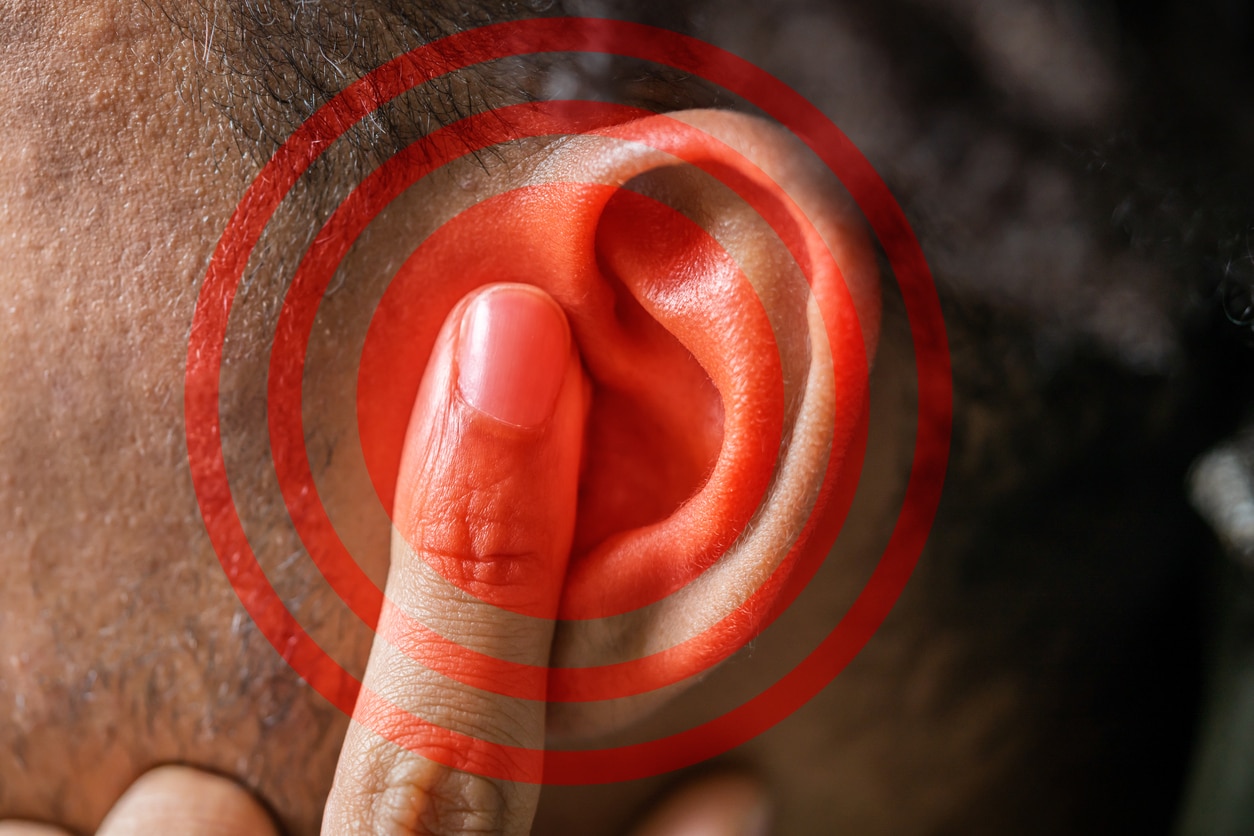Fluttering is a calming noise when you watch butterflies flitting around in the Williamsburg Botanical Garden, but it may not be as welcome when it pops up in your ear for no apparent reason. One potential cause of ear fluttering, a type of tinnitus, is tensor tympani syndrome (TTS).
What is Tensor Tympani Syndrome?

TTS is a rare condition where a tiny muscle in your middle ear, called the tensor tympani, starts to contract or spasm without you controlling it. This muscle helps regulate Eustachian tube movement to balance ear pressure and protects your ears from loud sounds by tightening the eardrum.
With TTS, the muscle twitches when it shouldn’t, which can cause you to hear a fluttering or buzzing noise. You can compare this muscle contraction to spontaneous calf tightening or eyelid twitching. Sometimes, if your hearing or ENT provider listens closely with a stethoscope, they can hear the fluttering. This unusual ear muscle movement is a rare cause of “objective tinnitus” — tinnitus that other people can hear.
The tensor tympani muscle is controlled by the mandibular branch of the trigeminal nerve, which normally helps with things like chewing. TTS is an example of middle ear myoclonus (MEM), the rhythmic contraction of a muscle. It may present alone or with stapedius myoclonus—an involuntary contraction of the stapedius muscle.
What Are My Treatment Options?
Because TTS is so rare, diagnosing and treating the condition is not always straightforward. There are two main approaches that focus on minimizing the involuntary muscle contraction (MEM):
- Medical intervention. Medications including benzodiazepines, carbamazepine, piracetam, botulinum toxin and orphenadrine citrate have all been used to manage MEM, though each has varying degrees of efficacy.
- Surgical intervention. Tympanotomy with tensor tympani is a surgical intervention that involves releasing the attachment site of the tympani muscle to reduce MEM-related tinnitus. Though tympanotomy with tensor tympani is not widely performed, it has been effective at resolving symptoms. In some cases, your surgeon will also recommend a stapedius tenotomy to detach the stapedius muscle.
If you are experiencing persistent fluttering, as if a butterfly is beating its wings against your ear canal, contact Hampton Roads ENT ~ Allergy to schedule an appointment with one of our specialists. We can review your symptoms and help you find the best path toward relief.
